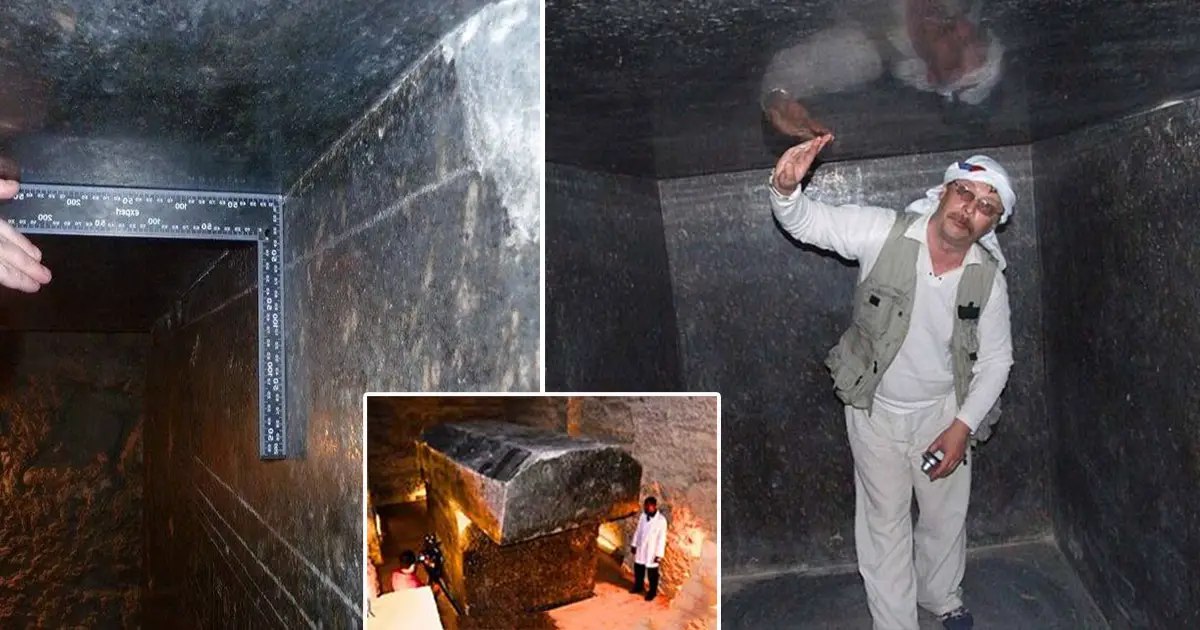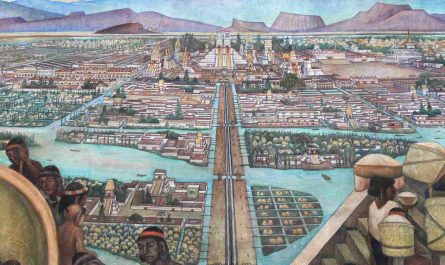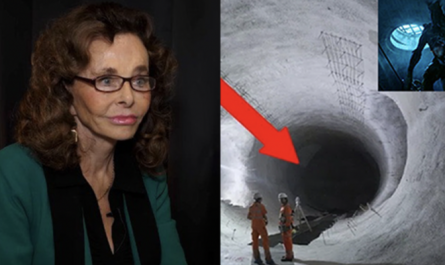In the vast desert landscape south of Cairo, overshadowed by the grandeur of the great pyramids, the Serapeum of Saqqara presents a historical enigma wrapped in stone. This underground complex, less celebrated yet no less captivating, holds a key to ancient Egypt’s incredible engineering prowess through its collection of monumental sarcophagi.
The Enigma of Saqqara’s Giant Sarcophagi
The Serapeum is home to 27 giant sarcophagi, believed to have been crafted around 3,500 years ago for the sacred Apis bulls. These sarcophagi are not only massive, each weighing up to 70 tons and stretching over 13 feet in length, but they are also sculpted from granite, one of the hardest stones known to man. The finish on these stone behemoths is so finely polished that it resembles the clarity of glass, raising profound questions about the technological capabilities of their creators. How, with only bronze tools at their disposal, did the ancient Egyptians manage to quarry, transport, and polish these massive stone containers?
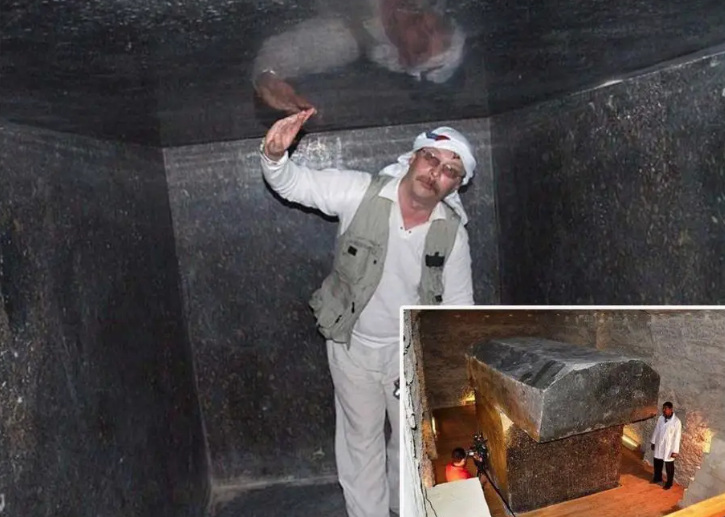
The Craftsmanship Behind the Stonework
The precision of the sarcophagi’s craftsmanship suggests a level of technological sophistication that seems almost out of reach for the time. Theories on the methods used abound, ranging from the employment of hard abrasives and lubricants to meticulous grinding, to more time-consuming techniques like sand sawing. Yet, none completely explain the uniformity in the hollowing of the interiors or the precise right angles achieved on each sarcophagus. Adding to the mystery, some experts, like Christopher Dunn, author of “The Giza Power Plant,” suggest the ancient Egyptians might have used advanced machinery, or even paranormal powers, to achieve such feats. These suggestions, while controversial, underscore the depth of the mystery surrounding the capabilities of this ancient civilization.
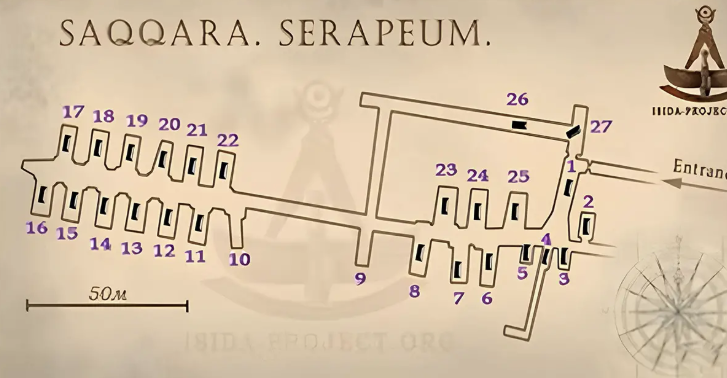
Reflecting on Ancient Techniques
The Serapeum of Saqqara stands as a profound testament to Egypt’s mastery of stonemasonry. It challenges modern engineers and historians to decipher the lost techniques that allowed such precise workmanship with the limited technological means available at the time. The polished surfaces of these sarcophagi do more than reflect light—they also reflect the ingenuity and perhaps the lost knowledge of an advanced ancient civilization. The sarcophagi are not merely burial sites but are symbols of the capabilities of the ancient Egyptians, offering us clues to the high level of craftsmanship achieved thousands of years ago. The meticulous detail and overwhelming scale of these artifacts continue to inspire awe and speculation among those who study them.
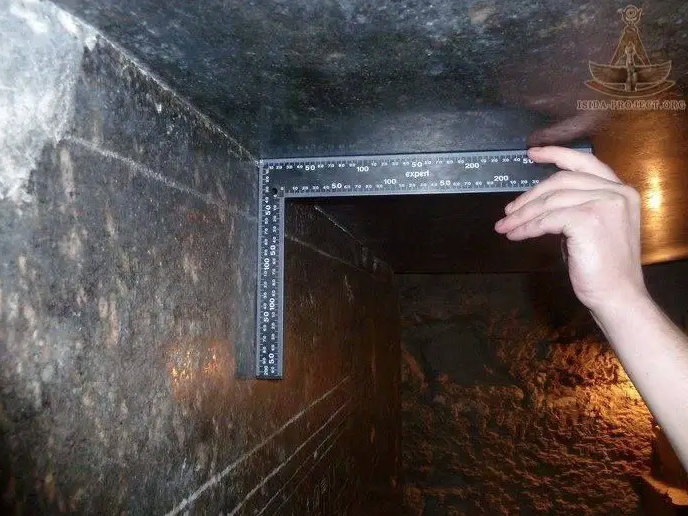
The Legacy of Saqqara’s Giant Sarcophagi
The giant sarcophagi of Saqqara are more than just stone artifacts; they are a bridge to the past, inviting us to explore and perhaps rethink our understanding of ancient technological advancements. These stone giants stand as silent witnesses to a civilization that mastered their craft to an extent that remains unparalleled in many ways. As archaeologists and engineers continue to study these relics, the Serapeum of Saqqara remains a focal point for debates and discussions. The ongoing research and discoveries only add layers to the mystery, continually reshaping our understanding of what the ancients might have achieved.
A Mirror to Ancient Ingenuity
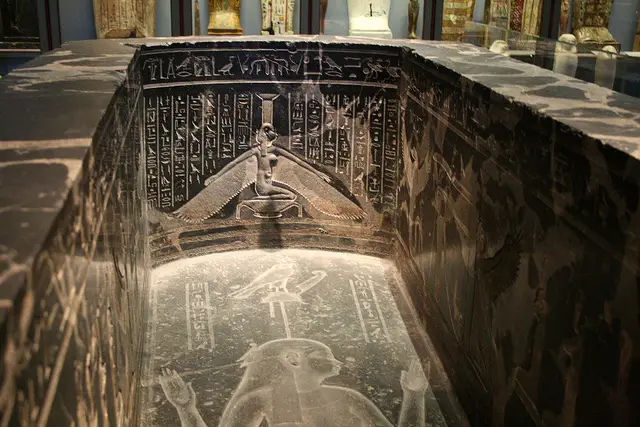
The Serapeum of Saqqara encapsulates a profound mystery at the heart of ancient Egypt. Each sarcophagus serves not just as a stone container but as a key to unlocking the extraordinary capabilities and technological advancements of a civilization long vanished.
They challenge us to expand our historical and technological perspectives and invite us to consider the heights of engineering and craftsmanship that were once achieved. What secrets do these ancient giants hold? The quest to unravel these mysteries continues, as each new finding helps shape our perception of history. The reflections we see in the polished granite of the sarcophagi are not just of ourselves, but of a time when humanity reached remarkable heights of ingenuity and craftsmanship. The journey to fully understanding the Serapeum of Saqqara is far from over, and its secrets continue to intrigue and mystify the modern mind.
